
The MSR Carbon Reflex 1 is an ultralight double-walled tent that weighs just 1 lb 7 oz. It's actually a second generation version of the Carbon Reflex 1, but now 11 oz lighter weight than the earlier generation tent I first tested in 2011. The weight savings come primarily from using lighter weight, lower denier fabrics in the rain fly and inner tent, in addition to a small reduction in the weight of the carbon fiber poles that the Carbon Reflex is named after.
While carbon fiber poles are exceptionally lightweight and strong, they're also quite resilient and help make this tent exceptionally wind resistant. They also increase the packability of the tent, eliminating the need for a bulky multi-way hub or awkwardly pre-curved poles. With a short segment length, the Carbon Reflex tent poles are also ideal for bikepacking trips, where flat poles are easy to strap to handlebars, a bike frame, or pannier rack.
Specs at a Glance:
- Minimum Weight: 23.5 oz (actual tested) incl. poles, fly, inner tent
- Component Weights:
- Carbon Fiber Tent Poles (2): 5.1 oz
- Rain Fly: 9.1 oz
- Inner Tent: 9.3 oz
- Tent bag: 1.0 oz
- Pole Bag: 0.4 oz
- Stake bag: 0.2 oz
- Stakes (9): 3.1 oz
- Minimum Number of Stakes Required: 5, although 7 is optimal
- Actual Interior Dimensions: 37″(height) x 27″(width) x 75″(length)
- Rain Fly: 7D Ripstop nylon 1200mm Durashield
- Floor: 15D Ripstop Nylon 1200mm Durashield
- Mesh: 10D polyester micro-mesh
Inner Tent and Carbon Fiber Tent Poles
The Carbon Fiber Reflex 1 is one step up from a bivy sack. That's not to denigrate its utility or comfort, but the beauty of a tent like this is its ability to fit in a narrow space without compromising too much on creature comforts. If you hike or bike all day and only stop when darkness is about to fall, you can't be too choosy about finding the ideal campsite for the night.
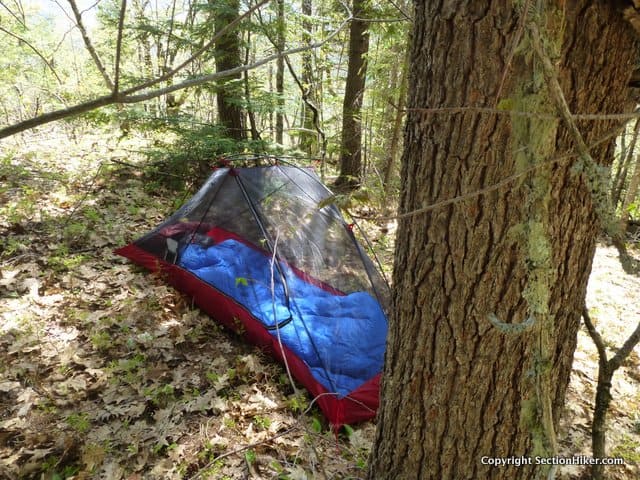
Measuring 27″ (width) x 75″ (length) x 37″ (height), the inner tent of the Carbon Reflex 1 is large enough to fit a 20″x 72″ sleeping pad, a sleeping bag, and a few personal possessions inside, with the remainder of your gear stored under the side vestibule. A seam-taped bathtub floor with high sidewalls provides plenty of protection from ground moisture, while the mesh walls and roof provide complete insect protection and ample ventilation.
Setting up the inner tent is also quite fast and easy. The tent floor requires four corner stakes to set up, which serve double duty, looping around the same stakes when you erect the tent fly. There are two carbon fiber poles, one that runs lengthwise over the tent and connects to the inner tent with plastic clips, while the second is a short cross pole that lays across it and provides near vertical sidewalls. Combined, the two poles provide plenty of interior space to move around and change your clothes, without requiring contortions.

The carbon fiber poles used to support the tent are quite thin (made by Easton), but surprisingly strong and wind resistant. They also fold flat, without an awkwardly sized central hub, except for two short and slightly curved aluminum sections near the ends of the long pole. The longest segment is just 16.25 inches long, making them easy to pack in a backpack or bike panniers, or strapped to your bike's handlebars or frame for bikepacking.

Carbon fiber poles sometimes get a bad rap as being easy to break when bent into an extreme curve, but the Carbon Reflex 1 CF poles require very little flexing so it's not an issue. The bigger concern are the ferrules where one pole joins the next and making sure that you don't split them accidentally by banging the ends together. This is issue with all thin ultralight tent poles, both aluminum and carbon fiber. The only other thing I'd caution you about it keeping track of the short carbon fiber cross pole, which is easy to lose in leaf litte or vegetation when you break down the tent in the morning. Ask me how I know.
Rain Fly
The Carbon Reflex 1 rain fly is cut in a dome shape providing a spacious front vestibule and a large rear air space when staked out. The corner guylines can share the same stake as the inner tent and have line lock adjusters on them for easy tensioning. Velcro strips on the underside of the fly can be used to secure it to the poles and the tent comes with several additional guylines as well as stakes to further secure the tent to the ground in heavy winds.
The vestibule doors on the Carbon Reflex 1 do not have a zipper for reduced weight and improved durability, since tent zippers are one of the most frequent points of failure in any tent. Instead, the door has two long velcro strips with a gap in between. There are also two metal hooks bar-tacked to the door seams that can be used to reinforce the velcro or keep the door open a crack to increase airflow.

While there is a rain gutter at the top of the door to allow you to open the vestibule in the rain without first being drenched, it does not prevent some water from leaking past the velcro in heavy rain. While the amount of water dripping in is miniscule and localized, I can't say that I'm a huge fan of the velcro attachment system despite its durability benefits. Zippers can be cleaned and lubricated quite easily using a product like Zip Tech Zipper Lubricant, something I'd recommend you apply to all tent, rain jacket, and gear zippers, at least once per year.
Recommendation
The updated MSR Carbon Reflex 1 Tent is lighter than ever, weighing just 1 lb 7 oz. That's even lighter weight than many of the tents sold by cottage ultralight manufacturers, something to consider if you're looking for sub-two-pound ultralight tent. While I have some reservations about the lack of a zipper in the vestibule door, I don't think its a showstopper unless you plan to use the Carbon Reflex 1 in a highly exposed locale where heavy wind-swept rain is the norm. On the other hand, if gear weight and packability are of paramount concern, the straight poles and small volume taken up by the Carbon Reflex 1 are quite suitable for backpacking and bikepacking use. There's also a lot to be said for having comfortable tent that can be set up in a small space where only a bivy sack would normally fit. It gives you a lot more flexibility to travel deep into the day, without having to worry about finding a larger campsite hours before nightfall.
Comparable Products
The NEMO Hornet 1 Elite also weighs 1 lb 7 oz and is similarly sized to the Carbon Reflex 1, but uses aluminum tent poles instead of carbon fiber ones. While more expensive, the Hornet Elite 1 also comes with a zipper on the fly, something that MSR chose to remove on the Carbon Reflex to reduce weight and improve durability. The only other double-wall one person tents in the same weight range are made by ultralight cottage gear manufacturers using Dyneema, but you can expect to pay considerably more for them.
MSR provided the author with this tent for review.
Published 2018.
Compare 3 Prices
-
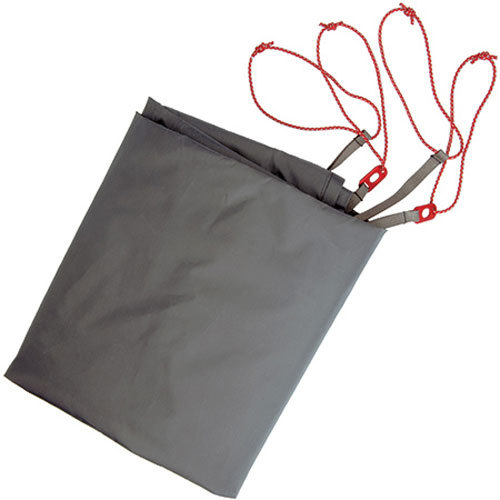
 Sunny Sports $34.95View
Sunny Sports $34.95View -

 CampSaver.com $49.95View
CampSaver.com $49.95View -
 Moosejaw $49.95View
Moosejaw $49.95View -

 Amazon US
Amazon US $399.95$394.92View -

 REI.com $399.95View
REI.com $399.95View -
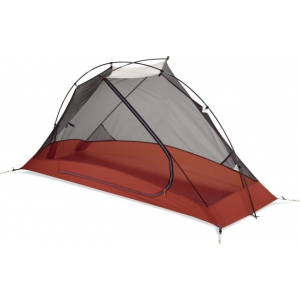
 CampSaver.com $399.95View
CampSaver.com $399.95View -
 Moosejaw $399.95View
Moosejaw $399.95View
See also:
- Nemo Hornet Elite 1 Tent Review
- 10 Best One Person Backpacking Tents
- The North Face Mica FL 1 Tent Review
The post MSR Carbon Reflex 1 Ultralight Tent Review appeared first on Section Hikers Backpacking Blog.
from Section Hikers Backpacking Blog https://ift.tt/2wA1DOx
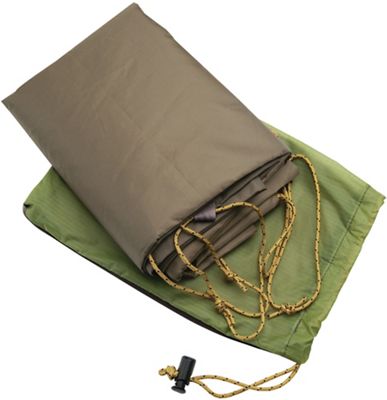
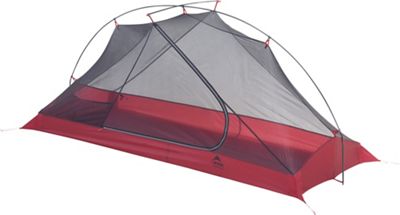
No comments:
Post a Comment